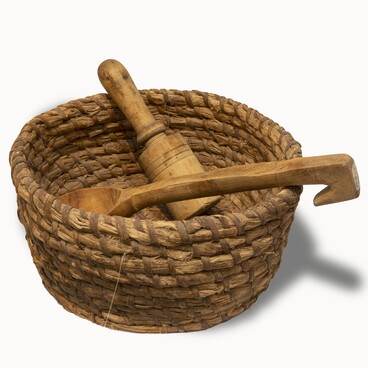The horizontal picture “Our Brave Soldiers” belongs to the so-called lubok genre. These were popular prints with a simple and colorful image created in the techniques of woodcut, etching, or lithography. The lubok achieved popularity in Russia in the late 17th century.
Such prints could depict historical events, scenes from literature, and religious tales. They varied in purpose and mood — from humorous to didactic. Some lubok prints also featured witty satire on social and political issues.
The simplicity of graphics and narratives, and the ease of production made lubok accessible to poor and uneducated people. During World War I, lubok prints were used to inform Russian people of the events on the front line, to boost morale, and to set people against the enemy. The texts which accompanied such lubok prints were often based on official statements of news agencies, newspapers, and magazines. Particularly popular were the images glorifying the heroic deeds of Russian soldiers and officers.
The foreground of the lubok print “Our Brave Soldiers” shows Austrians with their hands up. To the left is a Cossack on horseback. He holds a sword in his right hand. The Cossack rides a horse toward the Austrian soldiers. In the background is the horizon, and on the left is the edge of the wood. At the top, there is the name of the painting.
Underneath, there is an inscription that says, “While on reconnaissance, a Cossack stumbled upon Austrian frontier troops. Without a moment’s hesitation, he rode at full speed with his sword drawn at the Austrians, shouting and waving his arm as if to show that he was not alone. The Austrians were terrified by the apparent attack of the Cossacks, laid down their arms, and surrendered. Having disarmed all of his enemies, the Cossack brought them to his unit as captives. This was not the only example of the phenomenal ingenuity and bravery of the Cossacks.”
The painting is based on an actual feat of the Cossack Konstantin Nedorubov. It happened during the battle for the town of Peremyshl during World War I. While returning from a reconnaissance mission where he had lost his friends, the Cossack Nedorubov single-handedly captured a squad of fifty-two enemy soldiers. In February 1915, Konstantin Nedorubov was awarded the Cross of Saint George for this deed.
Such prints could depict historical events, scenes from literature, and religious tales. They varied in purpose and mood — from humorous to didactic. Some lubok prints also featured witty satire on social and political issues.
The simplicity of graphics and narratives, and the ease of production made lubok accessible to poor and uneducated people. During World War I, lubok prints were used to inform Russian people of the events on the front line, to boost morale, and to set people against the enemy. The texts which accompanied such lubok prints were often based on official statements of news agencies, newspapers, and magazines. Particularly popular were the images glorifying the heroic deeds of Russian soldiers and officers.
The foreground of the lubok print “Our Brave Soldiers” shows Austrians with their hands up. To the left is a Cossack on horseback. He holds a sword in his right hand. The Cossack rides a horse toward the Austrian soldiers. In the background is the horizon, and on the left is the edge of the wood. At the top, there is the name of the painting.
Underneath, there is an inscription that says, “While on reconnaissance, a Cossack stumbled upon Austrian frontier troops. Without a moment’s hesitation, he rode at full speed with his sword drawn at the Austrians, shouting and waving his arm as if to show that he was not alone. The Austrians were terrified by the apparent attack of the Cossacks, laid down their arms, and surrendered. Having disarmed all of his enemies, the Cossack brought them to his unit as captives. This was not the only example of the phenomenal ingenuity and bravery of the Cossacks.”
The painting is based on an actual feat of the Cossack Konstantin Nedorubov. It happened during the battle for the town of Peremyshl during World War I. While returning from a reconnaissance mission where he had lost his friends, the Cossack Nedorubov single-handedly captured a squad of fifty-two enemy soldiers. In February 1915, Konstantin Nedorubov was awarded the Cross of Saint George for this deed.


